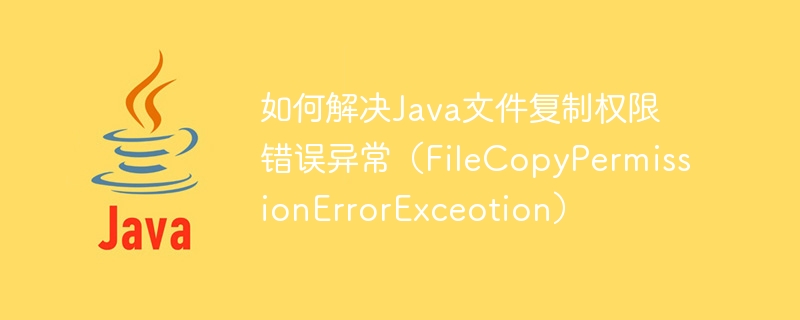
How to solve Java file copy permission error exception (FileCopyPermissionErrorExceotion)
In Java programming, file copying is a common operation. However, when we try to copy a file, we may encounter a permission error exception called FileCopyPermissionErrorExceotion. This exception usually means we don't have sufficient permissions to copy the file. So, how do we solve this problem?
Handling the FileCopyPermissionErrorExceotion exception requires taking the following steps:
File file = new File("sourceFile.txt");
if (!file.canRead() || !file.canWrite()) {
// 处理文件权限问题的逻辑
}If the file is not readable or writable, we can solve the problem by modifying the file permissions or running the program with administrator rights.
File file = new File("sourceFile.txt");
if (!file.canRead()) {
file.setReadable(true);
}
if (!file.canWrite()) {
file.setWritable(true);
}This will ensure the file is readable and writable, thus resolving permission issues.
When handling FileCopyPermissionErrorExceotion exceptions, we should also consider the following points:
try {
// 复制文件的代码
} catch (FileCopyPermissionErrorExceotion e) {
// 处理授权错误的逻辑
}To sum up, solving the Java file copy permission error exception (FileCopyPermissionErrorExceotion) requires us to check the file permissions, modify the file permissions or run the program with administrator rights. At the same time, when handling exceptions, attention should be paid to correct exception handling and error information acquisition. With the correct measures, we can successfully solve this problem and achieve successful execution of the file copy operation.
(word count: 683)
The above is the detailed content of How to solve Java file copy permission error exception (FileCopyPermissionErrorExceotion). For more information, please follow other related articles on the PHP Chinese website!